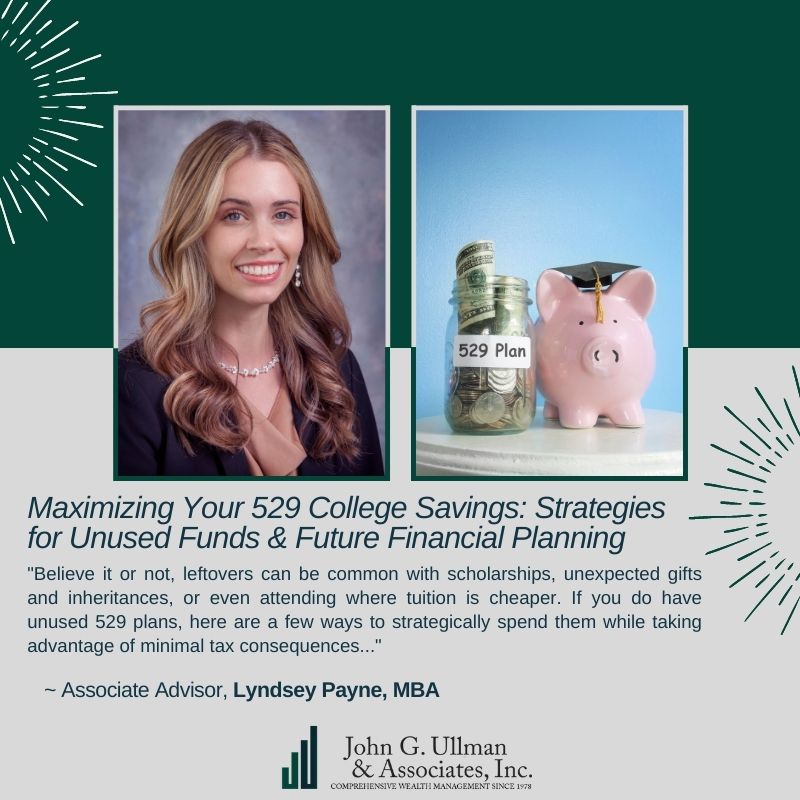Back to school is in the air. If the high cost of education expenses is on your mind, it might be time to consider planning financially for your children’s future. 529 college savings plans have the benefit of letting parents and relatives invest after tax dollars to later use for qualified education expenses. Or maybe you’ve already worked hard saving for your child’s college education. You’ve successfully sent them off and now find unused 529 plans. Believe it or not, leftovers can be common with scholarships, unexpected gifts and inheritances, or even attending where tuition is cheaper. If you do have unused 529 plans, here are a few ways to strategically spend them while taking advantage of minimal tax consequences.
Transferring the 529 plan to another beneficiary
One of the main perks of a 529 plan is you can change the beneficiary to another qualifying family member and avoid tax penalties. This can be an easy decision if you are expecting another child, grandchild or nieces and nephews to be attending college. You may even use it for a private K-12 education or on yourself for continuing education. Although, in NYS, using the funds to pay on k-12 education (although qualified for Federal) is not qualified for state purposes. This is where there could be tax implications for deductions taken prior (as the money went into the 529 accounts) as well as potential taxes/penalties on withdrawals or growth. Overall, when settling on changing the beneficiary, be sure to not skip generations as that could also prompt a tax consequence.
Leave it for the future
Whether your child decides to do a four year degree or not, leaving some or all in the unused 529 could be beneficial if they ever decide to continue their education. Others may want to attend grad school or change their profession later in life. Plus, there’s no penalty for leaving leftover funds. If the beneficiary is in a season of unsureness, this may be a good starting strategy before allocating the funds to a different beneficiary.
Use the leftovers to pay on student loans
The Secure Act has made it eligible for students and families to take a tax free distribution on a 529 plan to help pay off student loans. Qualified education expenses are both principal and interest payments, and you can pay up to $10,000 per 529 beneficiary in student loan repayments. However, like K-12 education mentioned above, using leftover funds to pay towards student loans is qualified for Federal but not qualified for NYS purposes. This is where similar tax implications come into play described above.
Rollover up to $35,000 into a Roth IRA
Starting January 1st 2024, beneficiaries may rollover a 529 plan into a Roth IRA but the limitations illustrated below do apply.
- The Roth IRA must be in the same name as the 529 beneficiary.
- $35,000 is the lifetime maximum a 529 beneficiary can transfer to a Roth.
- The 529 account must have been maintained for a minimum of 15 years.
- Earnings and contributions from the past 5 years can be rolled over.
- Annual contributions limits still apply.
It is safe to say there are plenty of options for unused 529 plans. At JGUA, we have a team of well-rounded family oriented advisors that have helped many overcome these decisions when planning for children and education. If planning for your family’s long term needs is on your mind, we’d love to help you through the process.







